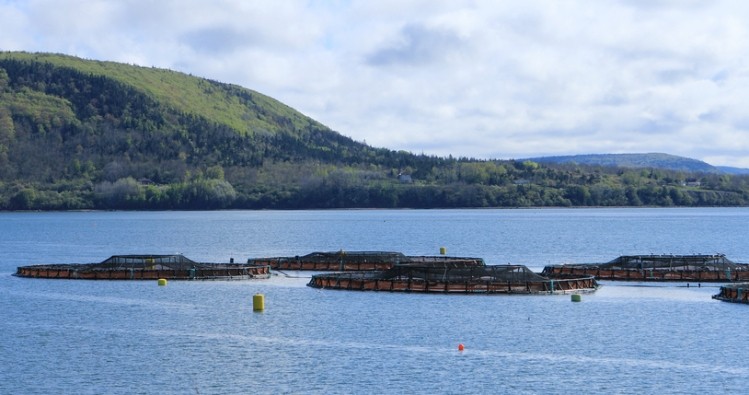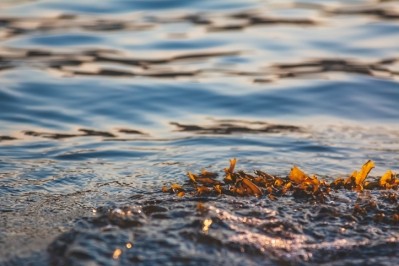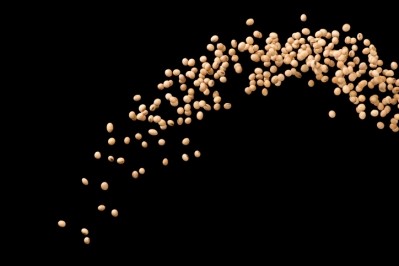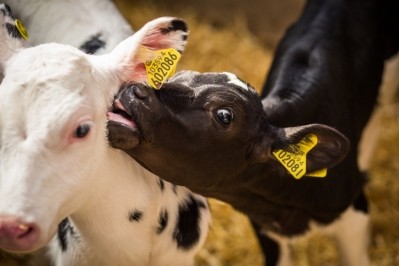Special Edition: Aquaculture feed innovation
Immunostimulant additive may boost fish mass, disease survival

An international team of researchers from Brazil and Portugal explored the influence of a novel immunostimulant feed additive on growth and immune response when used in the diets of A. gigas fingerlings.
The research team published details about its work in the journal Fish & Shellfish Immunology.
“This study investigated the effects of the Aquate Fish, a commercial immunostimulant, in the growth performance, physiology and immunity of A. gigas, evaluating the resistance against Aeromonas hydrophila,” the researchers said.
The researchers found that the feed additive did not alter feed intake or conversion, however, it increased biomass and the amount of “erythrocytes, thrombocytes, leukocytes, lymphocytes, monocytes, hemoglobin, glucose, globulins and plasma triglycerides” present in the fish getting the highest supplemented diet.
Following a disease challenge, fish receiving the supplement at 12g/kg diet had a 100% survival rate, compared to an 8.3% mortality rate in the control group fish, they said.
“The results of this study indicate that supplementation with 12 g of Aquate Fish/kg of diet improved the biomass and immunity performance of A. gigas fingerlings, without negatively impacting the hematological parameters investigated,” they added. “The 30-day supplementation period was sufficient to stimulate growth performance and to minimize handling stress and A. hydrophila infection, modulating innate immunity responses.”
Why an immunostimulant?
Pirarucu (Arapaima gigas) is a fish species native to the Amazon region that is an important species for cultivation as it is quick growing, tolerant of a high production density, has a high meat yield and is accepted in the domestic and international market, the researchers said.
However, production also faces challenges from the high cost and scarcity of fingerling and economic losses stemming from mortalities in early production.
“The handling of A. gigas during routine practices in aquaculture production can cause stress to the fingerlings, reducing the resistance to diseases outbreaks, leading to mass mortalities, caused mainly by aeromoniosis."
Aquaculture continues to need new practices and techniques to improve production and productivity, they said.
As global aquaculture has expanded several problems have been noted including a reduction in water quality and parasitic and bacterial diseases.
The use of immunostimulant ingredients, like Saccharomyces cerevisiae, to supplement fish diets has been suggested to boost fish performance by supporting the development of intestinal microbiota and the fish’s immune system, which makes fish more resistant to stressors like disease, they said.
Aquate Fish is a commercial feed additive that could be linked to improving fish internal defenses, the researchers said.
Past research adding the supplement to salmon diets saw the fish display an increase in mucous cell density and cell sizes, they said. Oreochromis niloticus that received the additive had improved survival rate and intestinal integrity along with reduced ectoparasites levels.
“It is necessary to investigate the ideal concentrations of this commercial immunostimulant for the addition in the diet of this Amazonian fish, aiming the improvement of its immunity,” they said.
Methods and materials
In the study, 96 fish were tracked through both a 30-day feeding and growth trial and a 7-day challenge trial where fish were infected with the bacteria Aeromonas hydrophila, the researchers said.
During the feeding trial, fish were given a commercial diet with varying levels of the Aquate Fish additive, they said.
The diets included it at 0, 6, 9 or 12g/kg diet and the additive contains zinc proteinate, seaweed meal, selenium, ascorbic acid and Saccharomyces cerevisiae extracts.
Fish were weighed at the start and end of the feeding trial and feed intake, relative condition factor, hepatosomatic index (HSI) and viscerosomatic index (VSI) were tracked, they said. Weight gain, specific growth rate (SGR) and feed efficiency (FE) was calculated.
Blood samples were taken for analysis from select fish after 30 days on the trial diets, they said.
Additionally, following the feeding trial sample fish from each diet were challenged with Aeromonas hydrophila and watched for a 7-day period for mortality and signs of bacteriosis before being subjected to handling stress, the researchers said. Blood samples were collected for analysis following the stress event.
Results
Overall, many of the growth performance indicators including body length, feed intake, daily weight gain, condition factor, VSI and feed conversion were similar for fish on all the diets, the researchers said. However, fish on the diet supplemented with 12g/kg of the feed additive had the highest biomass.
“Dietary supplementation with 12 g of Aquate Fish improved biomass and immunity performance of A. gigas fingerlings, without negatively affecting blood biochemical parameters,” they added.
Fish on the diet with 6g of the additive saw a drop in weight gain, daily weight gain, SGR and HSI, they said.
“Hematocrit, [mean corpuscular hemoglobin concentration] MCHC, respiratory burst, total protein, albumin and number of eosinophils did not vary with the dietary treatment, whereas the number of erythrocytes, leukocytes, lymphocytes, monocytes, thrombocytes, hemoglobin, glucose, plasma globulins and triglycerides were significantly increased with the addition of 12 g Aquate Fish/kg diet,” they said. Plasma cholesterol was higher in fish on the 6g and 12g supplemented diets, but the mean corpuscular volume (MCV) dropped for fish on the 12g diet compared to those on the 9g, they added.
Neutrophils were also lowered in fish on the 9g diet compared to fish on other feeds, the researchers said.
In the challenge trial, mortality only happened to fish on the control diet, they said.
“Post infection values of Kn, VSI, HSI, glucose, albumin, hematocrit, MCHC, number of monocytes, neutrophils and eosinophils did not vary among the dietary treatments,” they said. “Nevertheless, protein and globulin levels were significantly higher and MCV was lower in fish fed with 6 g Aquate Fish diet than fish fed control diet.”
Plasma cholesterol was higher for fish on the 6g diet than the 9g or 12g, and plasma triglyceride amounts were elevated in fish on the 9g diet, they said. Respiratory burst increased for fish on the 12g diet compared to those on other diets and total leukocytes and lymphocytes were higher in fish on the 6g diet compared to the control.
Source: Fish & Shellfish Immunology
Title: Growth, physiological and immune responses of Arapaima gigas (Arapaimidae) to Aeromonas hydrophila challenge and handling stress following feeding with immunostimulant supplemented diets
Authors: M. Dias, E. Yoshioka, A. Rodriguez, R. Ribeiro, F. Faria, R. Ozório, M. Tavares-Dias
DOI: doi.org/10.1016/j.fsi.2018.10.045















